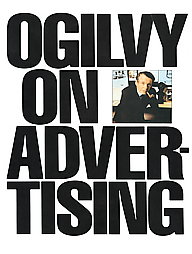My alternate headline for this post is: Winning web headlines can be long, but watch your column widths. Here’s why …
 The book that first inspired me to get into direct response — a move that led directly to my love of interactive marketing — was written by a famous ad man. Remarkably, David Ogilvy’s Ogilvy on Advertising is still in print. More remarkable is how much of his advice on successful direct marketing, print and television ads is still relevant. And directly transferable to the web.
The book that first inspired me to get into direct response — a move that led directly to my love of interactive marketing — was written by a famous ad man. Remarkably, David Ogilvy’s Ogilvy on Advertising is still in print. More remarkable is how much of his advice on successful direct marketing, print and television ads is still relevant. And directly transferable to the web.
I was thinking of him again today when I was in a design meeting where one of our web designers was counseling against an overly wide column of text. He said, “We don’t want this column to span more that 400 characters. More than that fatigues the reader.” Wow, I thought. This advice is almost verbatim from a book that predates the web as we know it by at least 10 years.
Headlines are another source of attention — and often misunderstanding. Although headlines linking to web pages can be short and still be effective, they should be long enough to get the job done. Abe Lincoln, when asked how long a soldier’s legs should be, was said to have answered, “Long enough to reach the ground.”
I’ve learned a lot by following the advice of the excellent Brian Clark, in his CopyBlogger. He periodically singles out strong headlines, based on his experience in the business. (And thanks again, Brian, for citing one of mine). His criteria remind me a great deal of Ogilvy’s, which was based on some of the deepest readership research done at the time for advertising. Here is Ogilvy’s take on the headline:
[Our research] reports that [print] headlines with more than 10 words get less readership than short headlines. On the other hand, a study of retail ads found that headlines of 10 words sell more than short headlines. Conclusion: If you need a long headline, go ahead and write one.
Other tidbits of his that apply to online headlines and links include the following:
- Headlines containing news are “surefire” — they are recalled by 22% more people than ads without news (and lots of pay-per-click research shows that they generate more clicks)
- Never use all capital letters — they’re less readable in both print and online. And with the web, people may think you’re shouting, to cite the classic email netiquette tip
- Whenever possible, promise a benefit
So what is the longest character count we counsel for headlines? Keep them to 75. It’s the standard set by Digg for their listing’s headlines. And this number is just a few characters greater than the number that is indexed by Google (according to lore and legend) when Google’s spiders read a page’s Title tag.
Which brings up an argument in favor of the longer headline that Ogilvy couldn’t have anticipated. Length improves the chances of including a keyword that will move your page higher in search engine results pages. That’s the sort of down-and-dirty selling tactic that the late Mr. Ogilvy would have loved.
Excellent article, Jeff. I read Olgivy on advertising when I first started writing ad copy. Coming from a journalism background, I knew how important headlines are. The medium might change, but the basic rules remain the same.